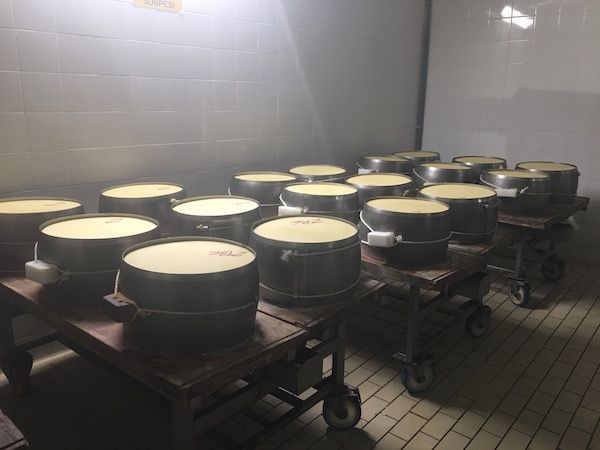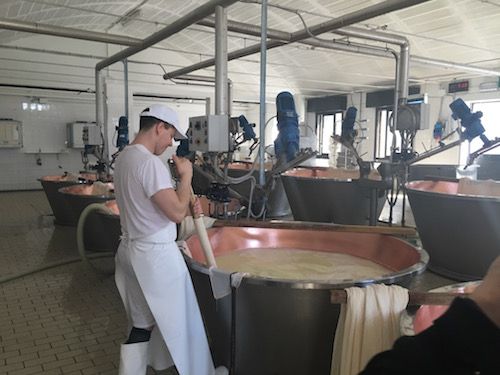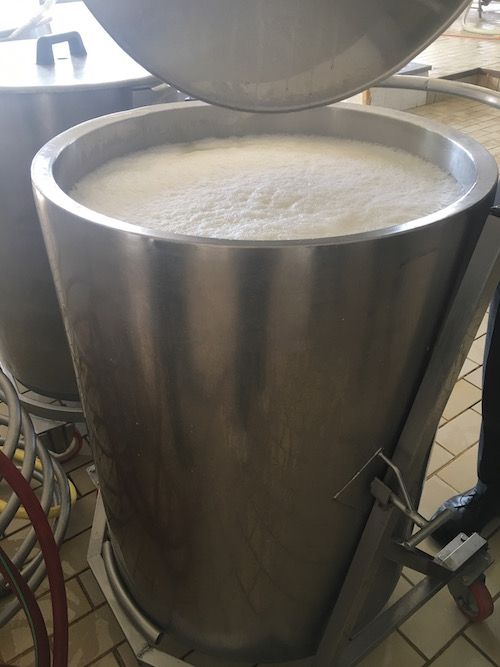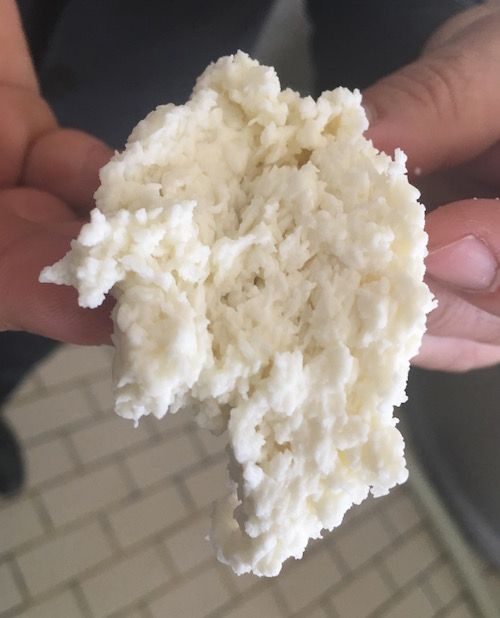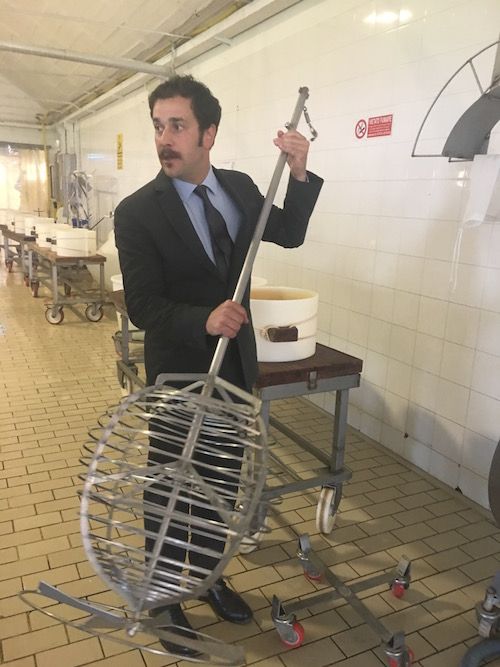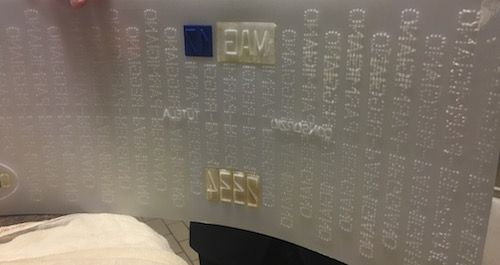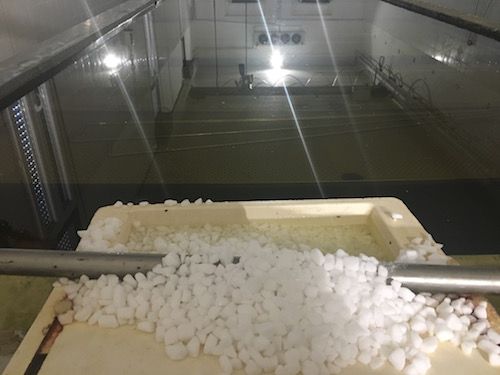Thanks to Antica Corte Palavincina, the Keeper Collection team had the chance to observe the expert cheese makers at Caseificio Censi in Polesine Parmese. Our guide explained that to be called Parmigiano Reggiano, it must be produced exclusively in the provinces of Parma, Reggio Emilia, Modena and parts of the provinces of Mantua and Bologna, between the rivers Po and Reno. We were lucky enough to see first hand just what goes into this complex and traditional practice from the experts themselves, where Parmigiano-Reggiano is king.
Parmigiano-Reggiano is unique from other cheese varieties due to the highly regulated process that goes into its creation. All aspects, from the specific type of animal feed used to the time-consuming aging process, must meet strict standards. The milk must come from either grass or hay fed cows, living only in western Italy, thus producing grass fed milk. The breed of the cows are specific as well.
We learned that Caseificio Censi produces 60-64 wheels of Parmigiano-Reggiano daily, beginning with a 5 a.m. wake up call every day of the year, no exceptions. The milk from the evening milking is left to rest until morning in large vats, where the fatty part rises to the surface. Overall, we were told that it takes 1,000 liters of milk to make just 2 wheels of this exceptional cheese.

